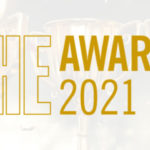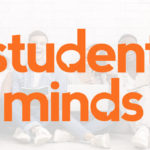In the last 10 years, the cost of higher education has increased substantially in many countries. Whilst institutions are doing more to widen access and create a culture of diversity and inclusion by breaking down barriers to education, affordability is still a considerable challenge recognised by university applicants and current students, with many affected by the student cost of living crisis. In a recent survey of university leaders conducted by Kortext and Wonkhe, 50% cited student financial struggles as a significant concern.
Hardship in Higher Education
To put it into context, in the US, Fidelity’s College Saving and Student Debt Study revealed that a quarter of parents of high schoolers – and over a third of students – grossly underestimate the cost of higher education, leading to “a growing number of parents turning to loans” to foot the bill. Furthermore, according to Save the Students’ most recent Student Money Survey, the average student cost of living in the UK exceeds £800 per month, with students at some universities reportedly spending over £70 per month on course materials alone.
This burden isn’t just carried by the student and their family. Higher education institutions – and particularly their libraries – have themselves experienced financial hardship in recent years with budget cuts putting into jeopardy any plans they may have had to provide more affordable learning opportunities.
Is your learning environment truly inclusive?
The reality is, if a student can’t afford their own textbooks, they’re often reliant on the university library to provide for them. However, whilst university libraries have made herculean efforts during the pandemic to maintain student access to essential reading materials, at Kortext, many of our partner universities cite growing student competition for print books in the library and lack of extra space as a concern and as significant drivers for investing in digital learning content. Without this, if a book isn’t readily available at the library and a student is turned away, they are immediately hit with a barrier that means they could get left behind – particularly if they are from a disadvantaged background.
In a 2021 survey of over 5,000 students, almost 1 in 10 respondents felt they did not “belong” at their university and it’s easy to wonder how barriers like affordability and the weight of financial pressures might impact this sense of belonging, student mental health and, of course, attrition rates. What is clear is that a learning environment cannot be considered truly inclusive if a subset of students can’t access the learning materials they need to succeed.
The role of technology in improving inclusion
There is no denying that Covid-19 has been a disruptive force on education, and one that is still being felt. But we can’t – and shouldn’t – ignore the more valuable by-products of the pandemic, with the accelerated adoption of smart, digital content platforms like Kortext being one.
During the pandemic, eTextbook provision was a lifeline for many institutions, enabling their students to continue their studies safely from home. In fact, in 2020, Kortext partnered with Jisc, Microsoft and publishers to launch the Free Student Textbook Programme, giving students free access to digital copies of their essential reading materials while the pandemic was at its peak.
Since then, the demand for eTextbooks has seen a sharp climb with some university libraries (budgets willing) now providing their students with – at the very least – digital versions of their core reading materials as part of their tuition fees. Now, as HE institutions consider how to move forward with the technology they’ve adopted – or indeed made greater use of – in the last two years, it’s important to remember that an eTextbook is more than just a book.
Reviving student engagement
With most eTextbooks now available as ePub files, students can enjoy an interactive experience that can’t be matched with a print book, where smart study tools can be used to drive and revive student engagement with course content and remove any obstacles for research and independent study. And when you’re engaged with your course, you’re more likely to feel a part of it.
Last summer, the Cambridge College Libraries Forum surveyed over 700 students about their experience with digital textbooks and found that, whilst there was “a clear preference for eTextbooks when reading a chapter for study purposes”, students preferred print books in all other scenarios. However, digital textbook usage data tells a different story.
The library at Aston University in the UK used data on a granular level to compare student engagement with print and eTextbooks. Taking one book as an example that, before January 2021, was only available to students in print, the library saw 1,015 loans of the 43 copies held since the book was purchased in 2013. After introducing a digital version of the textbook, over the course of just 8 months the university saw far greater engagement, recording over 1,800 study sessions with the eTextbook, 1,723 in-text searches and 522 in-book annotations. And this is just one example of many.
The institution has also seen some very encouraging feedback with one student saying:
I think that the access to reading materials through Kortext that has been available online has been instrumental in my success in the course so far. I tend to do a lot of my writing late at night when I have a clear head and being able to access these resources on demand has really helped me. If these had not been available I have no doubt that I would not be succeeding on the course in the way that I am.
For some students, having digital versions of their course reading materials available anytime, anywhere – even offline – offers a new and more beneficial way to learn. We spoke to one student studying Law who initially found the sudden pivot to eTextbooks and online learning in her first year a daunting experience but has since had a change of heart. She said:
Now in my final year, my view of the new digital learning revolution has changed, and I’ve come to appreciate the flexibility and freedoms it offers as well as the opportunity to develop vital independent learning skills.
Tackling student cost of living with OERs
It’s clear that there is a correlation between student affordability, access and inclusion, but this is where the growing cache of Open Access (OA) publications and Open Educational Resources (OER) can really make a difference.
Whilst research is sparse, and the UK is trailing behind the US in its adoption of OA and OER content, the results of initial studies in HE are a good indicator of the benefits for teaching and learning. Research published in the International Journal of Teaching and Learning in Higher Education concluded that these resources can “level the academic playing field in course settings” when offered to students from day one of their studies.
Of course, the trouble with Open Access content is that it’s so widely spread online that searching for particular information can be a laborious task. In this day and age, people want easy access to information. That’s why curated content like that available in the new Kortext Open Resources Collection can provide a step forward as institutions strive for equity of access and experience in HE. By embedding Open Access content into the teaching and learning experience as an affordable and accessible alterative to print textbooks, institutions can tackle the student cost of living crisis head on, reducing the financial burden on both the student and the university.
With a wealth of Open Access content that students can use for free on one platform, education can be open for everyone. A recent study revealed that 82% of UK university leaders see equality, diversity and inclusion as an essential strategic focus in the current year and, whilst technology can’t solve everything, it certainly can be part of the solution.







